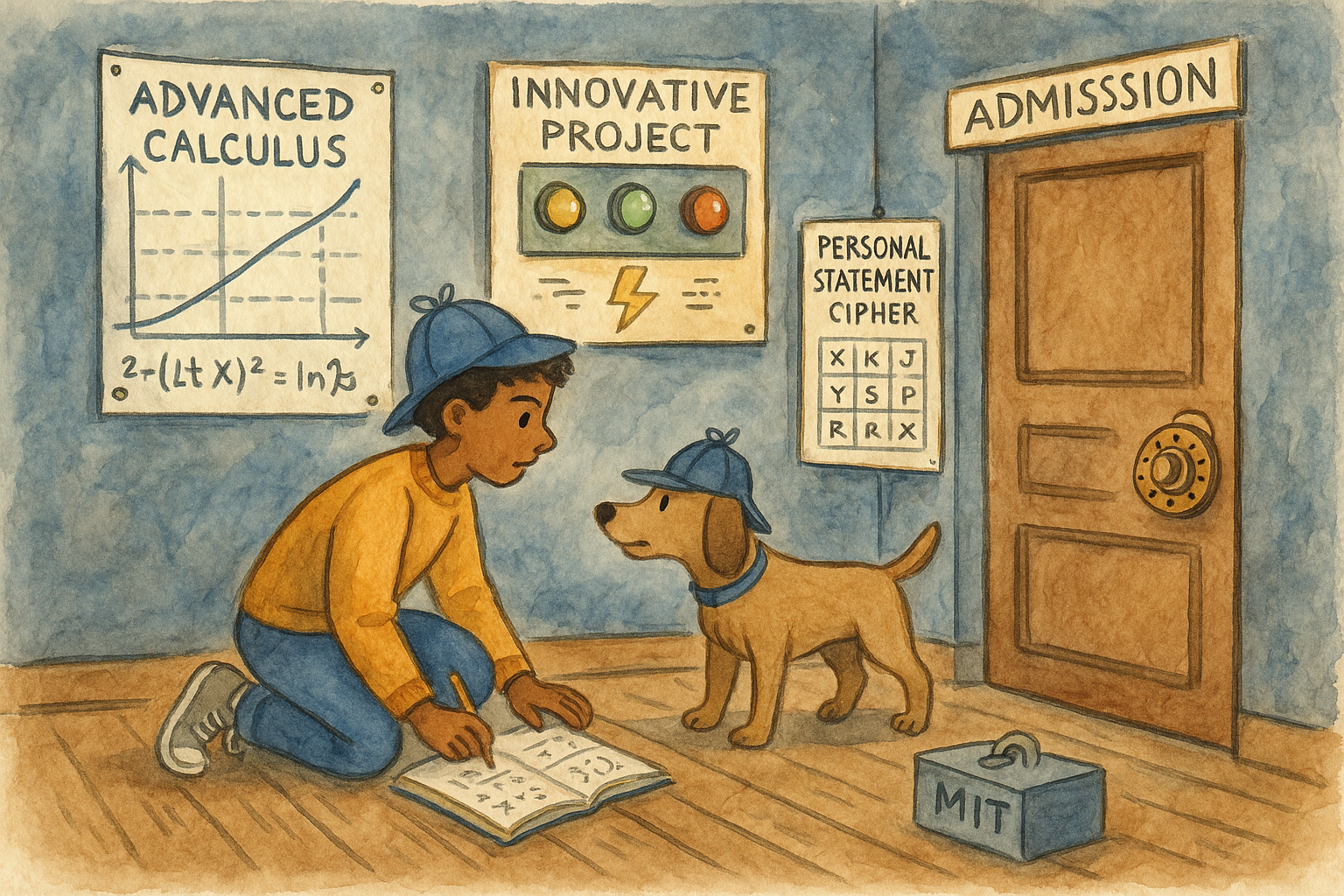
How to Write the MIT Supplemental Essays and Prove You're a Certified Genius
Let’s get real: MIT is not Harvard—it’s harder. Yes, you heard me. Don’t let those glossy acceptance rate charts fool you. MIT isn’t on the Common App, which means it’s a self-selecting pool of serious applicants. We’re talking prodigies who probably built robots in their basements before middle school, not just stellar GPAs and perfect SAT scores.
MIT wants raw talent, unfiltered genius, and a burning curiosity to solve problems that make the rest of us blink. If you’re not ready to prove you’ve got what it takes, this might not be your stage. But if you’re here for it, let’s dive in.
MIT’s Supplemental Essay Prompts
Unlike other top-tier schools, MIT’s prompts are short, straightforward, and designed to cut through the fluff. They don’t care about your love for their campus squirrels or how Boston’s winters build character. These essays are about you: your brilliance, your drive, and how you think.
Here’s what you’ll tackle:
- Describe the world you come from; for example, your family, clubs, school, community, city, or town. How has that world shaped your dreams and aspirations? (250 words or fewer)
- Pick a significant challenge you’ve faced and explain how you handled it. (250 words or fewer)
- Describe a time when you contributed to a community or group and discuss how that experience influenced you. (250 words or fewer)
- Tell us about something you’ve done simply for the pleasure of it. (250 words or fewer)
- Write about how you’ll use your time at MIT. (250 words or fewer)
How to Approach Each Prompt
1. Describe the world you come from
MIT wants to know what made you, you. This is not the time to list every award or club. Instead, tell a story that highlights the environment that sparked your curiosity.
Tips:
- Be vivid and specific: What does your world look like? Sound like? Smell like?
- Show how your environment connects to your academic or personal ambitions.
Example:
"Growing up in a household where the sound of sewing machines met the hum of physics lectures, I learned to view problems as puzzles. My mom, a seamstress, taught me precision; my dad, an engineer, showed me wonder. At 12, I reverse-engineered an old sewing machine to create a thread tension sensor for fabrics. Now, I dream of designing wearable tech that merges engineering with everyday life."
2. Pick a significant challenge
They’re not asking for your deepest trauma—unless it genuinely shaped your perspective. Focus on growth, resilience, and how this experience connects to your aspirations.
Tips:
- Show, don’t tell: Use vivid details to paint the picture.
- Highlight how the challenge shaped your problem-solving skills.
Example:
"When my high school’s robotics team couldn’t afford high-end sensors, I spent weeks building a LiDAR system from spare parts and open-source software. Testing it involved countless late nights and a lot of duct tape, but seeing our robot navigate the course flawlessly was worth it. This experience reinforced my belief that innovation thrives under constraints."
3. Contributing to a community
MIT isn’t just looking for solo geniuses—they want collaborators. Show how you uplift those around you.
Tips:
- Focus on a specific group or project.
- Highlight how your contribution impacted others.
Example:
"During quarantine, I started a virtual coding bootcamp for middle school students, focusing on game design. Watching kids light up as their first sprite jumped across the screen reminded me why I love computer science: it’s not just about solving problems; it’s about empowering others to create their own worlds."
4. Doing something for the pleasure of it
This prompt is your chance to be human. MIT wants to know what drives your curiosity and creativity beyond grades and achievements.
Tips:
- Avoid clichés like “reading” or “music” unless you can make them unique.
- Be quirky, unexpected, or deeply personal.
Example:
"Every weekend, I disassemble vintage clocks—not to fix them, but to understand their mechanisms. There’s something magical about seeing gears sync perfectly after decades of neglect. It’s a tactile reminder that precision and patience can bring even the most intricate systems back to life."
5. How you’ll use your time at MIT
This is your “Why MIT?” essay. Show you’ve done your homework and connect your goals to MIT’s unique opportunities.
Tips:
- Name-drop specific programs, professors, or resources.
- Tie these specifics to your long-term goals.
Example:
"At MIT, I’ll immerse myself in the Center for Bits and Atoms, exploring the intersection of digital fabrication and biology. Working alongside Professor Neil Gershenfeld, I hope to develop modular bio-sensors for disaster response. Beyond the lab, I’ll join the Hobby Shop to tinker with kinetic sculptures—because even engineers need art."
Why MIT Stands Out
MIT isn’t for everyone—and that’s the point. It’s a crucible for thinkers, doers, and dreamers who want to push boundaries. From its unparalleled research opportunities to its culture of collaboration (and a touch of mischief), MIT offers a stage for those who don’t just want to excel—they want to change the world.
Final Thoughts
Writing MIT’s supplemental essays isn’t about being perfect; it’s about being you. Show your quirks, your brilliance, and your drive. Whether you’re building robots, baking bread, or rethinking disaster relief, let your essays reflect the genius MIT is looking for.
And if you need a little extra help polishing your essays, you know where to find us—Top Dog has your back.

Post a comment